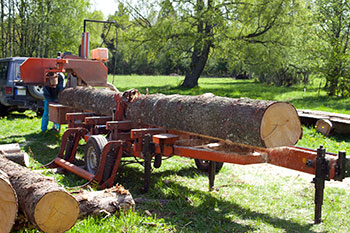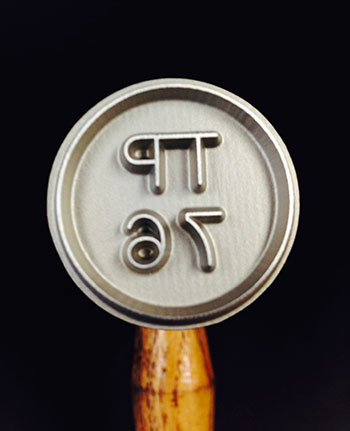
Are you an independent landowner, or own a small DIY lumber mill?
If so, you probably do not employ lumber graders, architects, or commercial home builders, but you still require lumber grading services to comply with local or state building codes.
Common questions we receive are:
- How do I get my lumber graded?
- Where can I find a certified lumber grader?
- How can I make my lumber building code compliant?
- Do I need to have my timbers graded?
- Can I grade this species of wood?
- What grade will my material meet?
- How do you perform lumber grade inspection?
- How will you mark the lumber to indicate grade?
- What lumber grades are available?
- Can you identify the species of wood samples?
Timber Products Inspection is your solution!

As leaders in lumber inspection, TP offers the following services specifically geared to meet your needs:
Certificate Inspection
When performing a certificate inspection, TP inspects your lumber at your location or at an offsite location. In order to schedule this inspection, the client must download and complete all of the information on the letter of request form (located under the "Documents" tab), sign it, and email it back to the lumberdivision@tpinspection.com email address. Once we receive your completed form and the required retainer, we can issue a work order out to our local inspector so that they can schedule the inspection after contacting you directly.
The availability of inspectors varies throughout the month, but we are able to accommodate a request typically, within a month from the time we receive an executed letter of request and required retainer (depending on inspector workload, this may take longer to schedule, but most requests occur within a month). Quicker times may be able to be accommodated depending on availability, but this will add to the travel costs. We charge for these inspections on an hourly basis (travel and inspection time) plus reimbursable expenses (lodging, mileage, meals, etc.).
The species of the material must be known prior to performing a certificate inspection in order to know which grade rules are applicable. If you know the species already, you can specify it on the letter of request form, but if not, we can provide species identification for most domestic woods; regardless, a species identification must be completed first. Once the species is known and which grade rules apply, the visual inspection process can begin. All four sides and both ends must be visible for all material to be inspected. Material that is not available for inspection at the time of the visit will not be included in the report. Timber Products cannot issue a certificate of grade for material that is not 100% visible. Only lumber used in structural applications needs to be graded for building code purposes; nonstructural items such as trim, flooring, and siding products are not required to be graded.
In addition to the visual process of determining the grade limiting defects present on each piece, TP will evaluate aspects such as moisture content, sizing, and surfacing quality (if surfaced). Lumber that is 2 inch nominal thickness is typically required to have a moisture content of 19% or less, whereas lumber that is 3 inch nominal thickness or greater typically does not have a moisture content limit. Standard sizes for rough dry lumber are 1/8 inch greater than the standard sizes for surfaced lumber (E.G. - dry, surfaced 2x4’s are 1-1/2 inch by 3-1/2 inch, and dry, rough 2x4’s are 1-5/8 inch by 3-5/8 inch), and rough sawn lumber is commonly cut to sizes larger than the minimum standard sizes. A certificate inspection can allow non-standard sizes though, since the minimum actual size found will be reported for each item inspected. Eased edges common in dressed commodity lumber are not a requirement of lumber graded under certificate inspections.
For every inspected piece that meets the grade requested, TP marks the accepted pieces with an identification mark such as a hammer brand or a unique crayon/paint mark that will be used for reference purposes in the final report. The final report will be required by the building code official as proof of building code conformance. Most of the certificate inspection jobs we perform involve a landowner who wants to build a house using rough-cut lumber that was cut from the trees harvested from their own property. To inspect the volume of structural lumber needed to build the average sized house built using conventional framing techniques, it usually takes TP approximately 4-8 hours onsite to complete the visual inspection process. The length of time required to perform these types of inspections is highly variable, though, with accessibility to the lumber being the biggest factor.
To maximize the efficiency of the jobsite, we recommend you begin by sorting the rough green lumber by width as it comes off the saw and stacking each width separately on supports/stacking sticks (stickers) that are evenly space and are of a consistent thickness. It is important to line up the stickers so that the weight of the boards is transferred to the ground to reduce drying defects. Airflow is paramount to proper drying, so the lumber stacks should be staged in a manner that does not impede natural airflow; it is recommended to not place the stacks inside a barn, adjacent to a wall, in a wooded area dense with ground-level foliage, or within 3-4 feet of a neighboring stack. A pole barn with no walls can be an ideal place to air dry lumber, but if not available, tin placed on top of the stacks can be similarly beneficial in keeping excess rain off of the stacks. Tarps are specifically not recommended, because they tend to drape over the sides reducing airflow. The U.S. Forest Service has a great publication that provides detailed information about air-drying of lumber, it can be found here.
Once 2 inch lumber has dried to 19% moisture content or less (approximately 3-6 months depending on species, widths, and site conditions), remove the stacking sticks and restack the material in units of like widths staged far enough apart with sufficient room to be restacked during the inspection process. Keep these stacks of lumber dry and protected from the rain! TP will then inspect the material by flipping through these units of lumber piece by piece and will mark and tally the accepted pieces as we go.
To engage us for one of these inspections, you will need to download the CERTIFICATE INSPECTION letter of request form (located under the "Documents" tab.) Completely fill out the form, sign it, and email it back to the lumberdivision@tpinspection.com email address. Once we receive this and the required retainer (see credit card authorization form on the last page of the letter of request form), we can begin scheduling the visit.
Reclaimed Material Review
TP can also inspect reclaimed material in a similar fashion as our certificate inspections. The difference between a certificate inspection and a reclaimed material review is that TP’s final report for a reclaimed material review will state that since the reviewed members were reclaimed for reuse and since the previous service life is unknown, published design values may not apply. This is a necessary statement, because it is possible for a member to have endured stresses that compromised its structural integrity due to defects that are not visible on the surface of the lumber.
To engage us for one of these inspections, you will need to download the RECLAIMED MATERIAL REVIEW INSPECTION letter of request form (located under the "Documents" tab.) Completely fill out the form, sign it, and email it back to the lumberdivision@tpinspection.com email address. Once we receive this and the required retainer (see credit card authorization form on the last page of the letter of request form), we can begin scheduling the visit.
Material-In-Structure Inspection
To perform a Material-In-Structure (MIS) inspection, TP compares the lumber in structure to the grade requested by the client. Our nationally recognized approvals will not allow us to certify material in structure to be on-grade, because while in structure it is impossible to see all four faces, and both ends of the individual pieces of lumber. Instead, the material can be inspected, and those pieces exhibiting visible defects that do not meet the grade requested can be identified as such. The remaining material is reported as having been compared to the required grade and being not visibly non-conforming to the grade requested. For example, if the structural member requires a No. 2 grade, our inspector will identify any pieces with visible defects below the grade of No. 2.
Grade comparisons take into account visible grade characteristics such as slope of grain, knots, splits, and shakes among other things. To observe these characteristics, accessibility to the members must be available. Furthermore, the presence of paint on the member can inhibit and/or prevent this process. If paint is present on the members, the visibility of the member characteristics must be evaluated on a case-by-case basis. Often times, the removal of paint is required along with anything else like insulation, drywall, sheathing, and other items that will reduce or eliminate visibility.
If the species of the material is unknown, small samples can be submitted for positive identification prior to performing the MIS inspection. The samples will be prepared and viewed under a microscope for positive identification. By identifying the species prior to the MIS inspection, the client will be able to determine what grade (per National Design Specification) is desired.
The length of time required to perform these types of inspections is highly variable with accessibility to the wood framing being the biggest time factor. Based on this variability, we perform these inspections on an hourly basis (travel and site time) plus reimbursable travel expenses (lodging, mileage, meals, etc.). Availability of inspectors varies throughout the month, but we can typically accommodate a request within a month or so from the time we receive an executed letter of request and required retainer. Quicker times may be attainable, but it may add to travel costs.
The letter of request form that you will fill out for this type of inspection has an excerpt from our INSPECTION QUALIFICATION STATEMENT, which will be the basis of our inspection and contains sample verbiage of the language that we use as a part of our final reports. We recommend that you review this with your local building official prior to having TP perform the inspection in order to make sure they have no questions about what to expect from the final report.
To engage us for one of these inspections, you will need to download the MATERIAL IN STRUCTURE INSPECTION letter of request form (located under the "Documents" tab.) Completely fill out the form, sign it, and email it back to the lumberdivision@tpinspection.com email address. Once we receive this and the required retainer (see credit card authorization form on the last page of the letter of request form), we can begin scheduling the visit.
Wood Species Identification
Timber Products can also perform species identification on wood samples you provide. We typically need a specimen approximately the size of a golf ball to properly perform the identification.
Give us a call today to discuss our services and schedule an inspection!